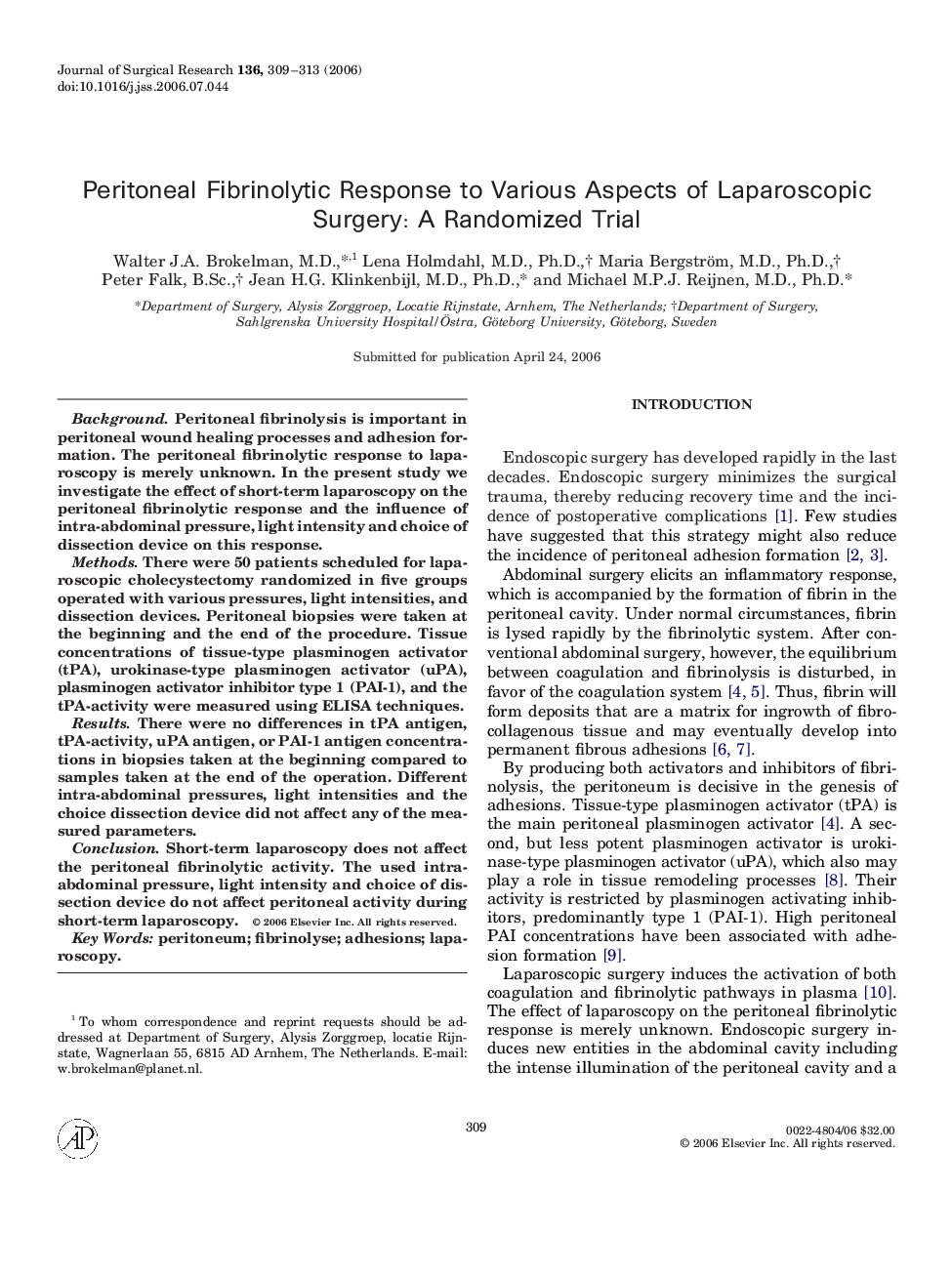| Article ID | Journal | Published Year | Pages | File Type |
|---|---|---|---|---|
| 4304657 | Journal of Surgical Research | 2006 | 5 Pages |
BackgroundPeritoneal fibrinolysis is important in peritoneal wound healing processes and adhesion formation. The peritoneal fibrinolytic response to laparoscopy is merely unknown. In the present study we investigate the effect of short-term laparoscopy on the peritoneal fibrinolytic response and the influence of intra-abdominal pressure, light intensity and choice of dissection device on this response.MethodsThere were 50 patients scheduled for laparoscopic cholecystectomy randomized in five groups operated with various pressures, light intensities, and dissection devices. Peritoneal biopsies were taken at the beginning and the end of the procedure. Tissue concentrations of tissue-type plasminogen activator (tPA), urokinase-type plasminogen activator (uPA), plasminogen activator inhibitor type 1 (PAI-1), and the tPA-activity were measured using ELISA techniques.ResultsThere were no differences in tPA antigen, tPA-activity, uPA antigen, or PAI-1 antigen concentrations in biopsies taken at the beginning compared to samples taken at the end of the operation. Different intra-abdominal pressures, light intensities and the choice dissection device did not affect any of the measured parameters.ConclusionShort-term laparoscopy does not affect the peritoneal fibrinolytic activity. The used intra-abdominal pressure, light intensity and choice of dissection device do not affect peritoneal activity during short-term laparoscopy.
